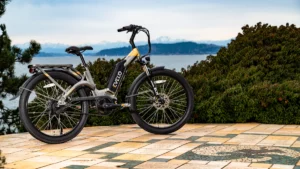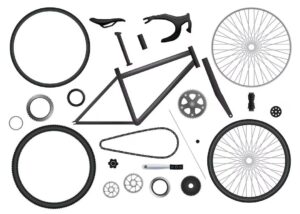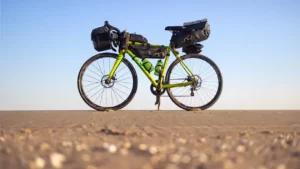The right bike accessories can significantly enhance your cycling experience. Whether you’re a seasoned cyclist or a beginner, the must have bike accessories are crucial for your riding journey. These items improve your comfort and ensure your safety on the road. From practical tools to safety essentials, this guide will walk you through the accessories you need to make your rides smoother, safer, and more enjoyable.
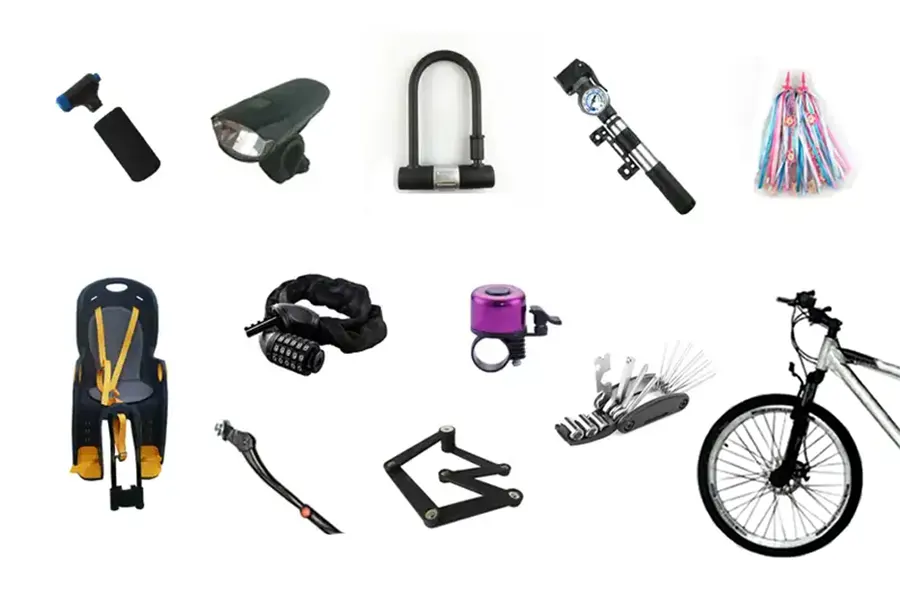
The Blog List of Essential Must Have Bike Accessories
The Must Haves
Bike Pump
Bike Front and Rear Light
Bike Lock
Bike Mudguard
Bike Bell
Bike Mirror
Very Nice to Have
Bike Bag
Bike Luggage Carrier
Bike Cover
Bike Glove
Bike Rack
Bike Tool
Bike Kickstand
Bike Bottle Holder
The Must Haves
When it comes to essential bicycle accessories online, certain items stand out. These are the fundamental pieces of gear every cyclist should consider, sourced from reputable bike accessories manufacturers and suppliers like SHINE SOON. Let’s delve into the indispensable tools and gadgets for every bike enthusiast.
Bike Pump

A bike pump is a device that allows you to inflate your bike’s tires, ensuring they have the proper air pressure for optimal performance. The basic mechanism involves a piston that moves inside a cylinder, compressing air and forcing it into the tire. Regularly checking and maintaining tire pressure with a bike pump helps prevent flats and provides a smoother ride.
Bike Pump Type
Different types of bike pumps cater to various needs. Understanding these can help you choose the most suitable one for your biking habits.
- Floor Pumps: These are robust and efficient, ideal for home use. They have a large chamber that allows for quick and easy inflation of tires to high pressures. Floor pumps often come with pressure gauges for accurate inflation.
- Hand Pumps: Portable and compact, hand pumps are designed for on-the-go use. They can easily be attached to your bike frame or carried in a bag. While they require more effort and time to inflate tires compared to floor pumps, their portability makes them a must-have for emergency repairs.
- CO2 Inflators: These use CO2 cartridges to quickly inflate tires, making them extremely convenient for quick fixes during rides. However, they are a one-time use per cartridge and can be less environmentally friendly than traditional pumps.
- Electric Pumps: These are battery-operated or rechargeable and provide effortless inflation with the push of a button. They are great for cyclists who prefer convenience but are usually bulkier and more expensive than manual pumps.
Bike Front and Rear Light
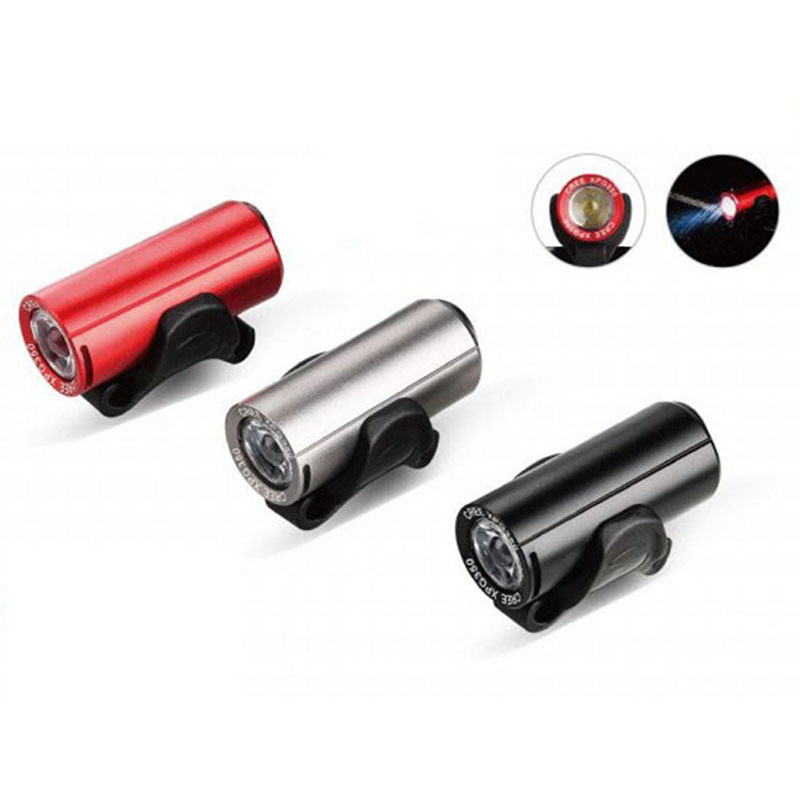
Bike lights are essential for visibility and safety, consisting of a front light to illuminate the path and a rear light to signal your presence to other road users. They are crucial for riding in low-light conditions, ensuring you can see and be seen. They include brightness (measured in lumens), multiple lighting modes (steady, flashing), and water resistance for durability. They often come with rechargeable batteries and various mounting options for easy attachment to the bike.
Bike lights use LED technology powered by batteries, converting electrical energy into light efficiently. The front light focuses a beam ahead to light the path, while the rear light disperses light broadly to ensure visibility from behind.
Which Bike Lights to Buy?
When choosing bike lights, consider the following factors to ensure you select the best options for your needs:
- Purpose and Environment: If you ride in well-lit urban areas, a lower-lumen light with good side visibility might suffice. For dark, unlit roads or trails, opt for high-lumen lights with focused beams.
- Brightness (Lumens): For front lights, a minimum of 200 lumens is recommended for urban commuting, while 800+ lumens are ideal for rural or off-road conditions. Rear lights should be at least 50 lumens to ensure you’re visible from a distance. If you want to learn more about good lumens for bike light, welcome to read our expert guide [What Lumens for Bike Light? Guide to Lumens & Uses].
- Battery Life: Choose lights with sufficient battery life for your typical ride duration. Long-lasting batteries are crucial for extended rides or commutes. Consider USB rechargeable lights for convenience.
- Mounting Options: Ensure the lights can be securely mounted on your bike. Quick-release mounts are convenient for removing lights to prevent theft.
- Durability: Look for lights with robust construction and good water resistance (IPX4 or higher) to withstand rain and splashes.
- Additional Features: Some advanced lights come with smart features like automatic brightness adjustment, connectivity with bike computers, or built-in alarms.
Bike Lock
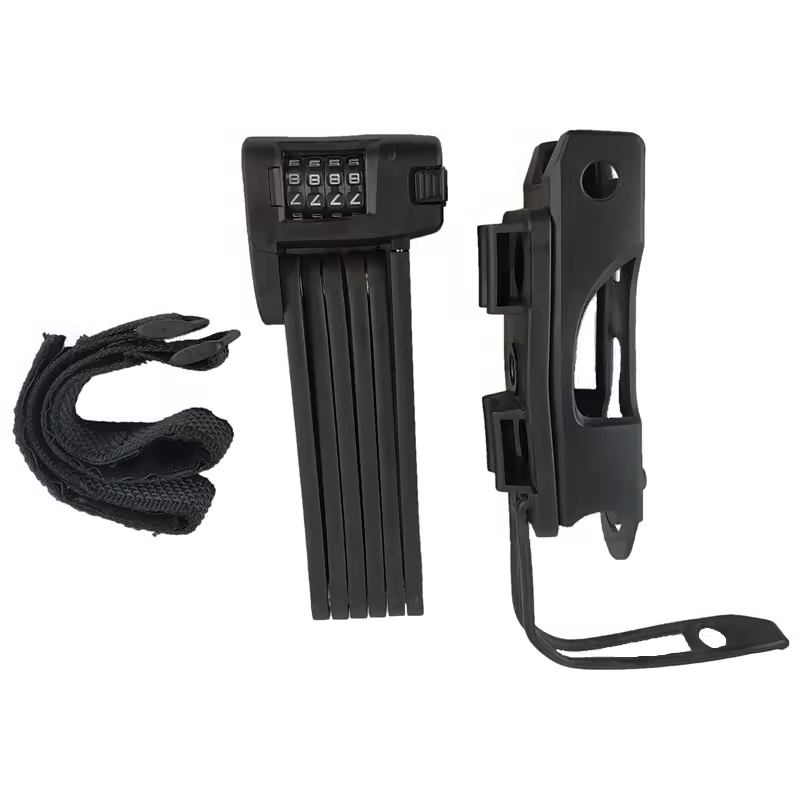
A bike lock is a security device used to prevent bike theft. It secures the bike to a fixed object, deterring potential thieves. Lightweight bike locks are convenient to carry and can provide sufficient security for short stops in low-risk areas.
Bike Lock Type
- U-Locks: Known for their robustness, U-locks provide excellent security by locking both the frame and the wheel to a stationary object. They are heavier but offer high protection.
- Chain Locks: These offer flexibility in securing your bike to various objects. Heavy-duty chain locks are highly resistant to cutting but can be cumbersome to carry.
- Cable Locks: Lightweight and easy to carry, cable locks are best for low-crime areas or as secondary locks. They offer moderate security and are more vulnerable to cutting tools.
- Folding Locks: These combine flexibility and security. Made of steel bars connected by rivets, folding locks are compact when folded and provide decent protection.
Different bike locks have their features, functions, and applications, please read our comprehensive guide about U-Lock, Folding Lock, Chain Lock vs. Cable Lock: Which Bike Lock Is Better? to choose the right lock for yourself.
Bike Mudguard
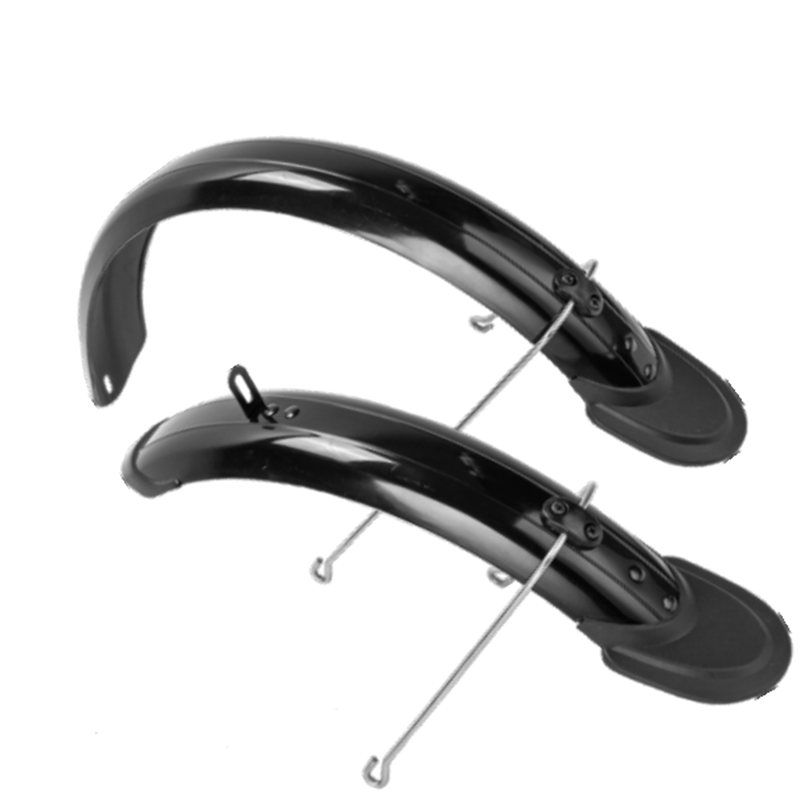
Bike mudguards, also known as fenders, protect you and your bike from mud, water, and debris. They help keep you clean and dry, especially when riding in wet conditions. The best mountain bike mudguards are designed to withstand rough terrains and harsh weather.
Fender vs Mudguard: What’s the Difference?
While often used interchangeably, fenders typically refer to full-length guards that cover more of the wheel, offering maximum protection. Mudguards are shorter and usually attach directly to the bike frame or fork, providing essential splash protection without the bulk.
Do I Need Mudguards on My Bike?
Mudguards are highly recommended if you frequently ride in wet or muddy conditions. They enhance comfort by reducing splashes and protect bike components from dirt and grime, prolonging their lifespan.
Bike Bell

A bike bell is a simple yet effective device for alerting pedestrians and other cyclists of your presence. It typically consists of a lever and a spring-loaded striker that produces a clear, ringing sound when flicked.
Should a Bike Bell Be Installed on Right or Left?
The placement of a bike bell depends on personal preference and hand dominance. Most cyclists install it on the left side for easy access while keeping their right hand on the brake lever. However, choose the side that feels most natural and convenient for you.
Bike Mirror
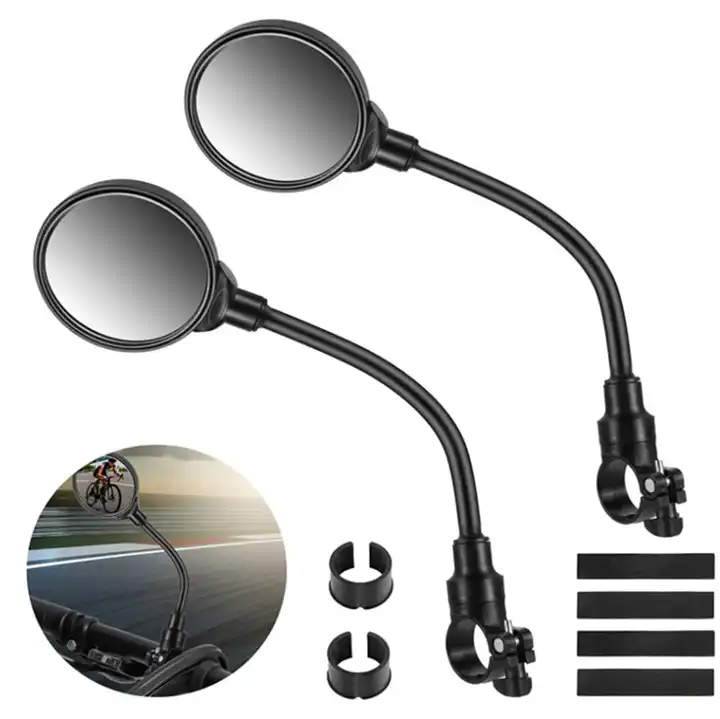
A bike mirror is an accessory that allows you to see behind you without turning your head, enhancing safety and awareness. It attaches to the handlebar, helmet, or glasses and provides a wide-angle view of the road.
Bike Mirror Type
- Handlebar Mirrors: These are mounted on the handlebars and offer a stable and clear view. They come in various shapes and sizes, providing different fields of view.
- Helmet Mirrors: Attached to the helmet, these mirrors move with your head, allowing you to glance at traffic behind you with a slight head turn.
- Eyewear Mirrors: Small mirrors that attach to your glasses, providing a rear view without obstructing your vision.
Very Nice to Have
Beyond the essentials, there are several accessories that can enhance your biking experience, offering added convenience and comfort.
Bike Bag

A bike bag is a versatile accessory for carrying personal items, tools, or groceries. It attaches to various parts of the bike, such as the frame, saddle, or handlebars, providing convenient storage space.
3 Common Bicycle Bags on A Bike
- Wheel Bags: Designed to protect your wheels during transport, these bags are padded and durable, preventing damage and scratches.
- Saddle Bags: Mounted under the saddle, these compact bags are perfect for carrying small essentials like tools, spare tubes, and snacks.
- Frame Bags: Fitted within the bike frame triangle, frame bags offer larger storage capacity without affecting the bike’s balance. They are ideal for carrying heavier items on long rides.
Bike Luggage Carrier
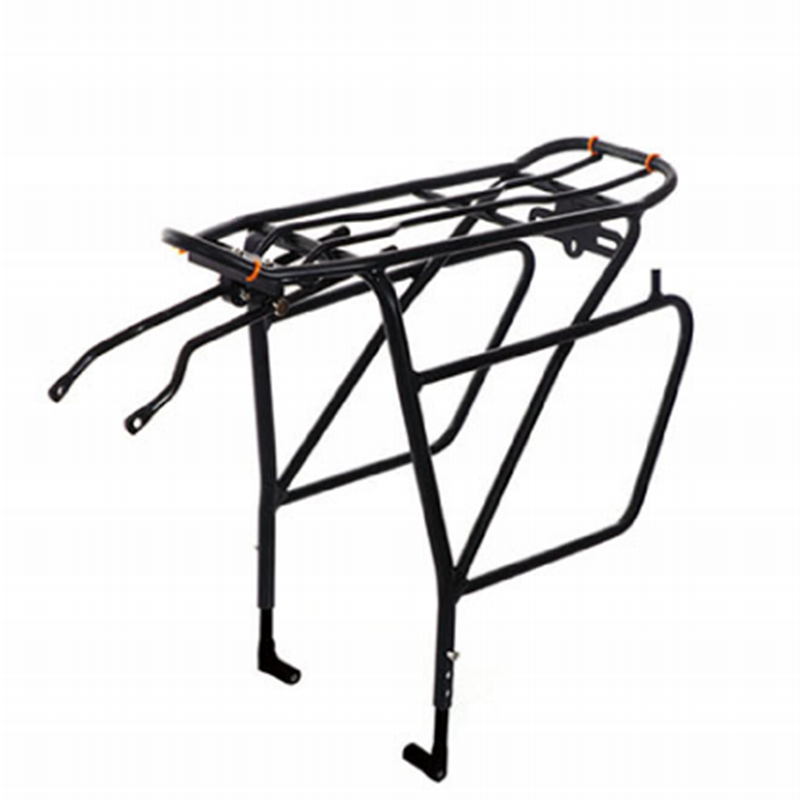
A bike luggage carrier, or rack, is a frame attached to the rear or front of the bike for carrying cargo. It provides a stable platform for panniers, baskets, or other luggage, making it easier to transport items.
Benefits of Putting it on Bike
A bike luggage bag is not just a carrier; it can reduce your physical stress. Here’s its benefits:
- Enhanced Cargo Capacity: Allows you to carry larger and heavier items, making it easier to transport groceries, bags, or gear.
- Improved Weight Distribution: Helps evenly distribute weight across the bike, reducing strain on your back and shoulders.
- Increased Versatility: Ideal for commuting, touring, or running errands, offering a practical solution for carrying essentials.
- Reduced Need for Backpacks: Eliminates the need for wearing a backpack, providing a more comfortable and sweat-free ride.
- Stability and Safety: Ensures secure attachment of cargo, preventing items from shifting or falling off during the ride.
- Convenience: Makes it easy to attach and detach panniers, baskets, or other storage solutions, enhancing overall functionality.
- Enhanced Bike Balance: Maintains better bike balance by keeping the center of gravity low, improving ride stability.
- Eco-Friendly Transport: Promotes a more sustainable lifestyle by enabling efficient, car-free transportation of goods.
Bike Cover
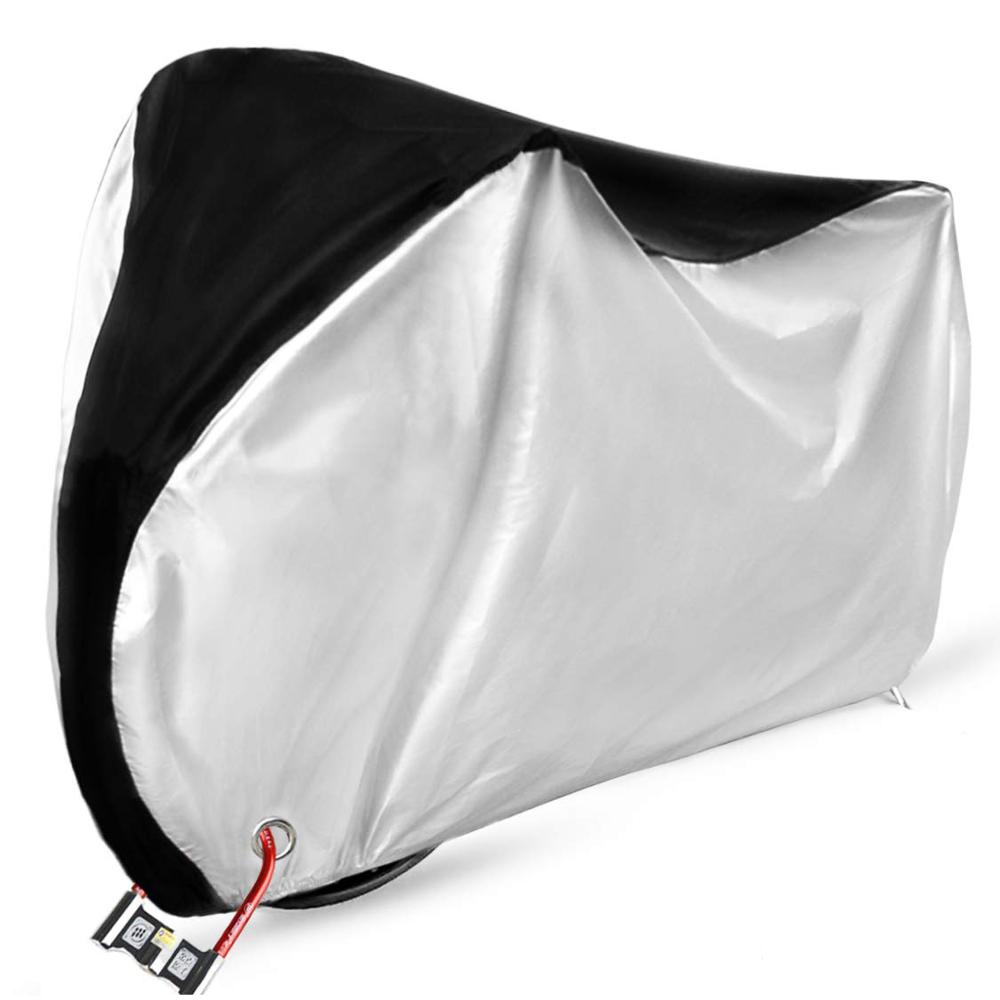
A bike cover, a protective layer, can create a barrier between your bike and external elements. When properly fitted, it envelops the entire bike, protecting it from rain, sun, and dust. The cover’s material repels water and blocks UV rays, while the secure fit ensures it stays in place even in windy conditions. It helps maintain the bike’s condition by preventing rust, corrosion, and general wear and tear. A good bike cover includes waterproof material, UV protection, and durable construction with reinforced seams. Covers with elastic hems or adjustable straps for a snug fit, and ventilation to prevent moisture buildup. Some covers also come with lock holes for added security.
Which Bike Cover Is Best?
When selecting a bike cover, consider the following options for their quality and specific features:
- SHINE SOON Bike Cover
- Material: High-quality fabric with black and silver coating for enhanced durability and UV protection.
- Features: Waterproof, weather-resistant, elastic hems, adjustable buckles, and lock holes for added security. Suitable for outdoor use.
- Ideal For: Cyclists needing reliable protection against rain, sun, and dust, with a focus on outdoor weather resistance.
- Pro Bike Tool Bike Cover:
- Material: High-quality ripstop fabric with double-stitched seams.
- Features: Waterproof, UV-resistant, with an adjustable buckle strap for a secure fit. Lock holes for added security.
- Ideal For: Comprehensive protection in various weather conditions, durable and long-lasting.
- YardStash Bike Cover:
- Material: Heavy-duty polyester with UV protection and waterproof coating.
- Features: Elasticized front and back hems, mid-buckle for secure fit, lock hole design. Large enough to fit multiple bikes.
- Ideal For: Multi-bike households and those seeking robust protection against harsh weather.
- Ohuhu Bike Cover:
- Material: 210T Oxford fabric with PU coating for waterproof and UV protection.
- Features: Adjustable buckles and lock holes, portable with a storage bag included.
- Ideal For: Budget-conscious cyclists needing reliable protection without sacrificing quality.
- TeamObsidian Bike Cover:
- Material: Thick, waterproof nylon with UV protection.
- Features: Elastic hems, adjustable buckles, and lock holes. Designed for both indoor and outdoor use.
- Ideal For: Cyclists looking for a high-quality, versatile cover for different storage conditions.
Bike Glove
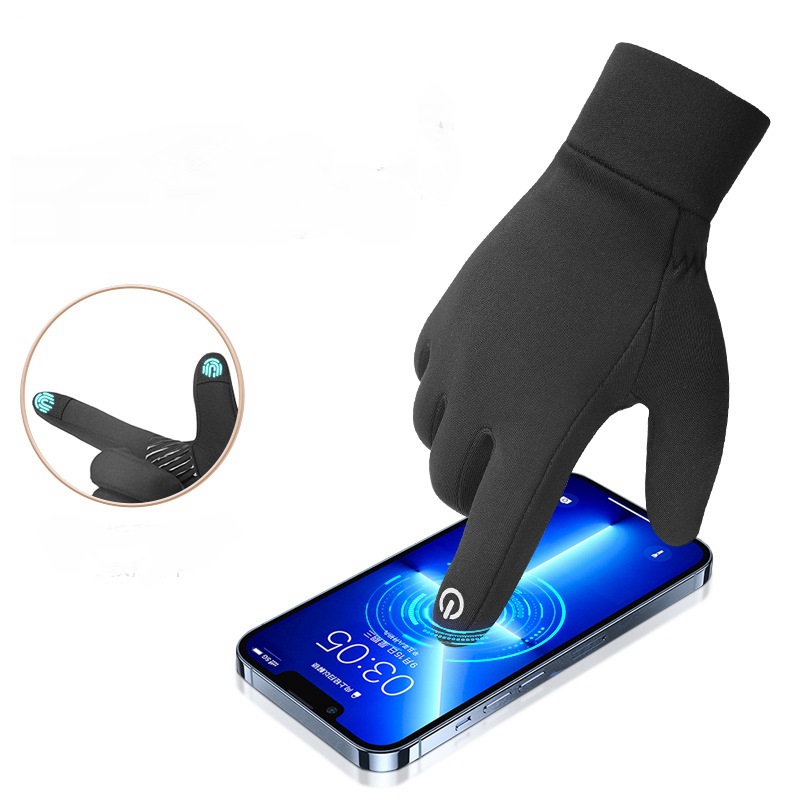
Bike gloves are specialized handwear that provide comfort, grip, and protection during cycling. They feature padded palms to absorb shock and reduce hand fatigue, breathable materials to prevent sweating, and secure closures for a snug fit. By enhancing grip and cushioning, bike gloves prevent blisters and numbness, improving overall ride comfort and control.
Which Type of Gloves Is Best for Bike Riding?
For wet conditions, waterproof hand gloves for bike riding are essential. They keep your hands dry and warm, ensuring a firm grip on the handlebars. In warm weather, breathable gloves with good ventilation are ideal to prevent sweating and discomfort.
Bike Rack
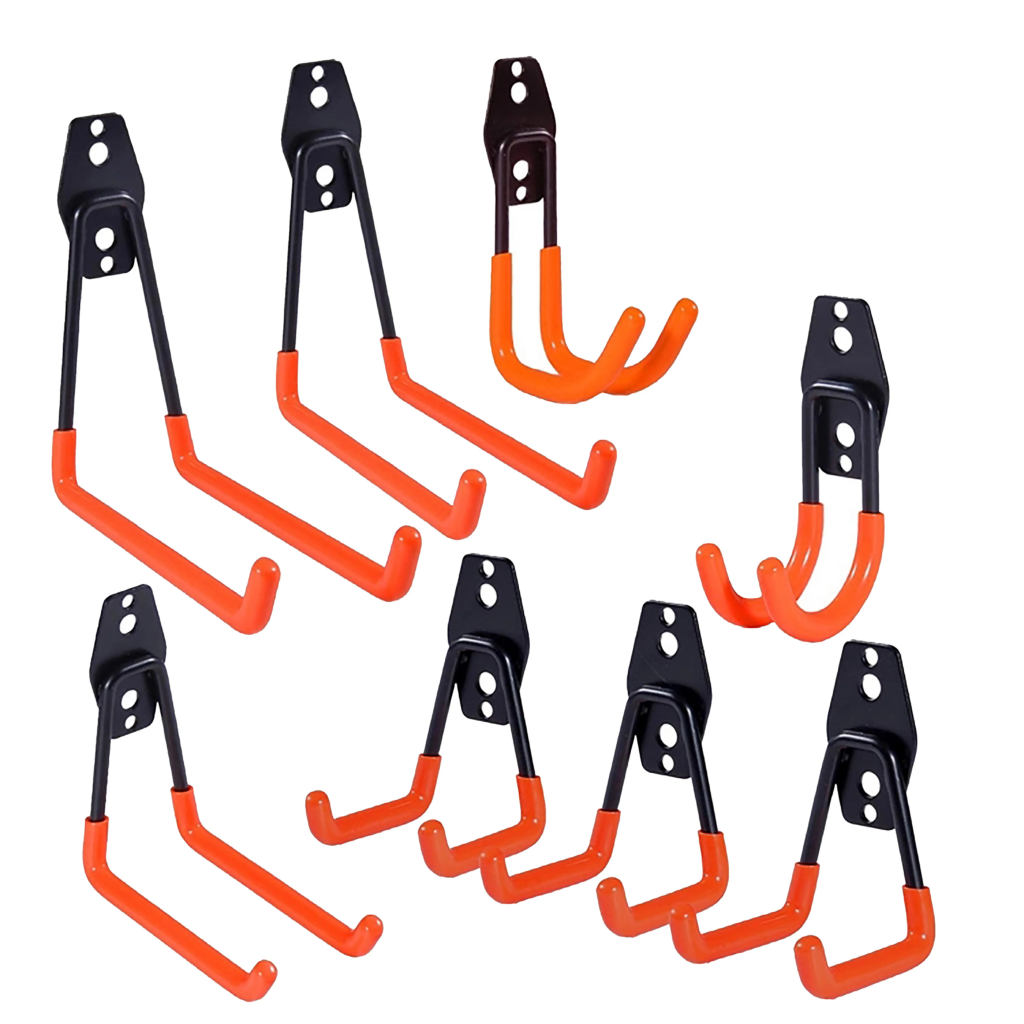
A bike rack is a device attached to a vehicle or bicycle to transport or carry bicycles. It features sturdy construction, secure mounting points, and various designs (roof-mounted, trunk-mounted, or hitch-mounted) to suit different vehicles. Bike racks work by providing a stable platform where bicycles can be securely fastened using straps or clamps, ensuring safe and convenient transportation without damaging the bike or vehicle.
How Do Rear Bike Racks Work?
Rear bike racks attach to the back of a vehicle, usually via the trunk or hitch. They secure the bikes using straps or clamps, allowing you to transport multiple bikes without compromising vehicle space.
How to Use Bike Rear Rack?
To use a rear bike rack, first, ensure it is properly installed on your vehicle. Load the bikes by securing the frame and wheels to the rack using the provided straps or clamps. Double-check all connections before driving to ensure the bikes are stable.
Bike Tool

A bike tool, often referred to as a multi-tool, is a compact, portable device designed for on-the-go bicycle maintenance and repair. It features various tools such as Allen wrenches, screwdrivers, tire levers, chain breakers, and spoke wrenches, all integrated into a single, easy-to-carry unit. Bike tools work by providing cyclists with essential instruments to perform quick adjustments and repairs, ensuring they can address common mechanical issues during a ride and maintain optimal bike performance.
Applications of Bike Repair Tool
- Adjusting Brakes and Gears: Use Allen wrenches and screwdrivers to fine-tune brake calipers and gear derailleurs for smooth and efficient operation.
- Fixing Flat Tires: Tire levers help remove the tire from the rim, and wrenches can remove the wheel bolts, making it easier to replace inner tubes or patch punctures.
- Chain Maintenance: Chain breakers are used to remove broken links and rejoin chains, ensuring smooth pedaling and preventing chain-related issues.
- Tightening Bolts and Screws: Various sizes of wrenches and screwdrivers help tighten or loosen bolts and screws on different bike components like handlebars, seats, and accessories.
- Spoke Adjustment: Spoke wrenches enable the adjustment of spoke tension to true wheels, ensuring the bike rides straight and smooth.
- Emergency Repairs: Compact size and versatility make it ideal for emergency repairs during rides, helping cyclists get back on the road quickly.
Bike Kickstand
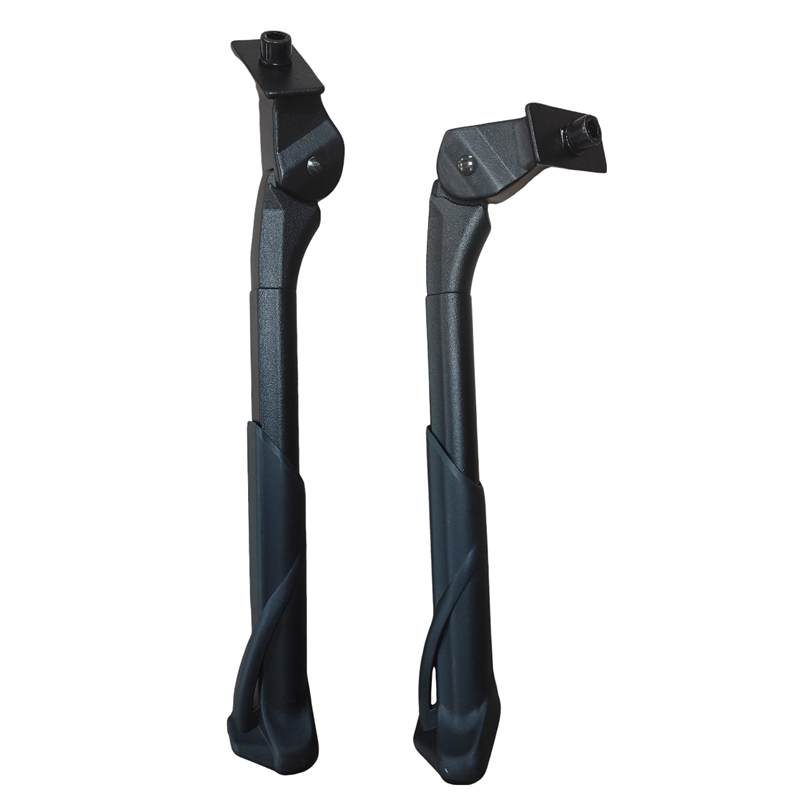
A bike kickstand is a support device that allows your bike to stand upright when not in use. It is mounted to the frame and can be deployed to hold the bike steady.
Center vs Rear Kickstand: What’s the Difference?
Center kickstands attach to the middle of the bike frame and provide balanced support, making them ideal for heavy loads. Rear kickstands mount near the rear wheel and are easier to deploy, suitable for lighter bikes and casual use.
Bike Bottle Holder
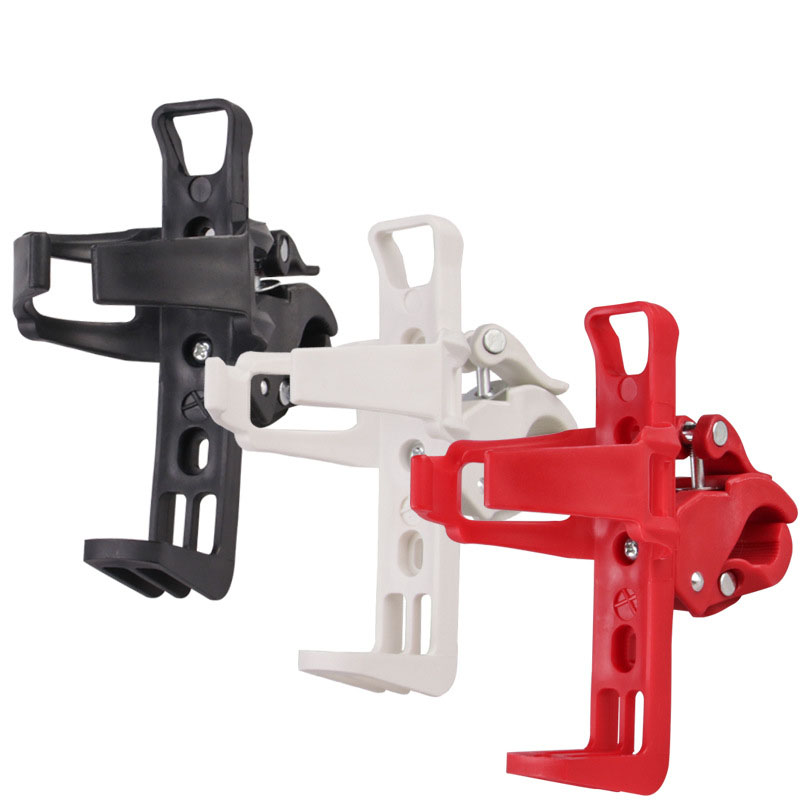
A bike bottle holder is a cage that attaches to the bike frame, designed to hold a water bottle securely during rides. It ensures you stay hydrated without stopping to access your drink.
What Size Water Bottle Fits in a Bike Holder?
Most standard bike bottle holders fit water bottles for bicycles with holders ranging from 20 to 25 ounces. Ensure the holder is adjustable or designed to securely hold.
Conclusion
In conclusion, The right must have bike accessories is essential for safety and enjoyment during your rides. From reliable bike lights that enhance visibility to sturdy locks that protect against theft, each accessory matters. Choosing high-quality items like durable bike covers and versatile multi-tools ensures you’re prepared for various riding conditions. By investing in these essentials, you safeguard your bike and optimize your cycling experience, whether commuting through city streets or exploring rugged trails. Embrace these must-have bike accessories to enhance comfort and safety on every ride.

